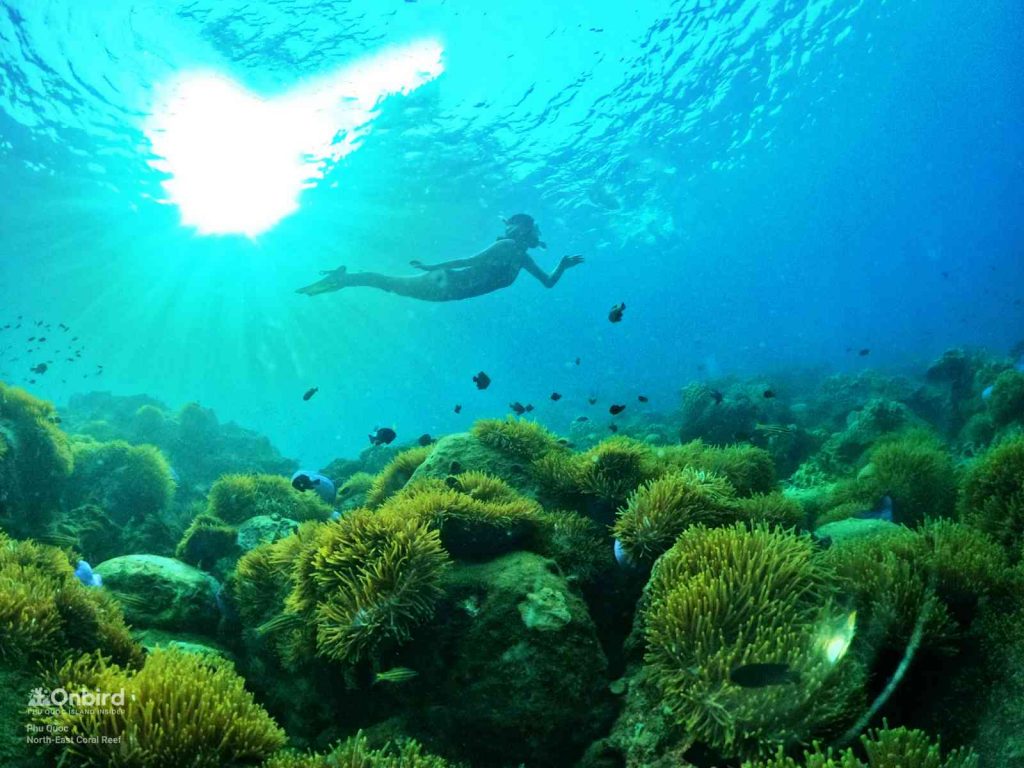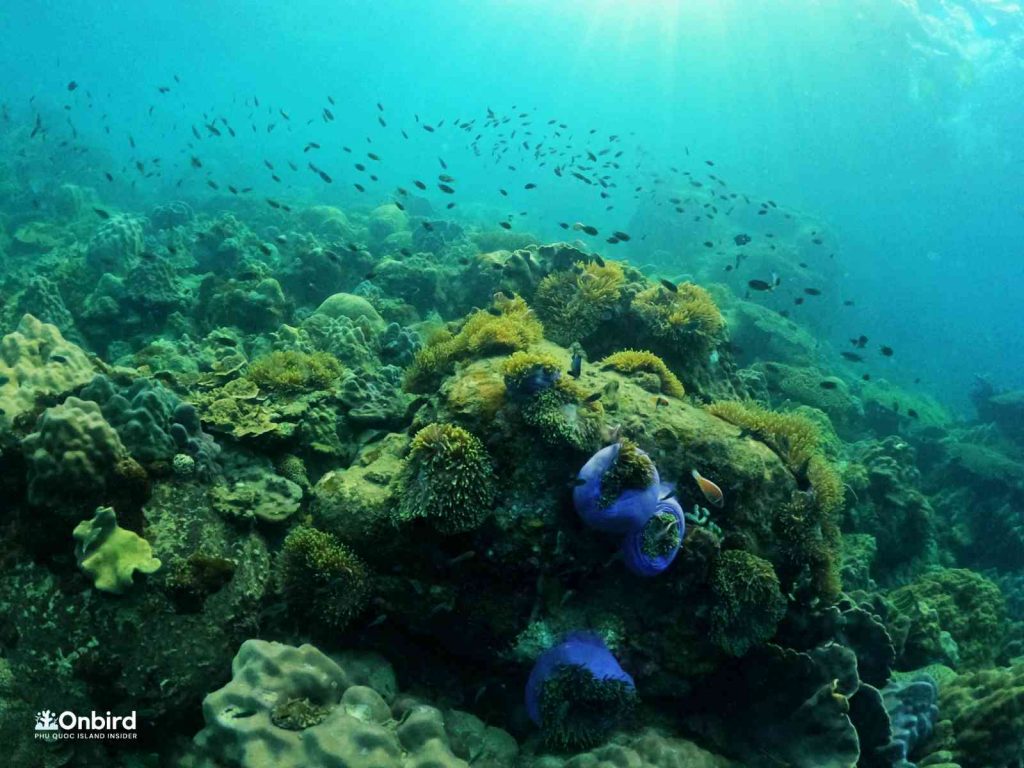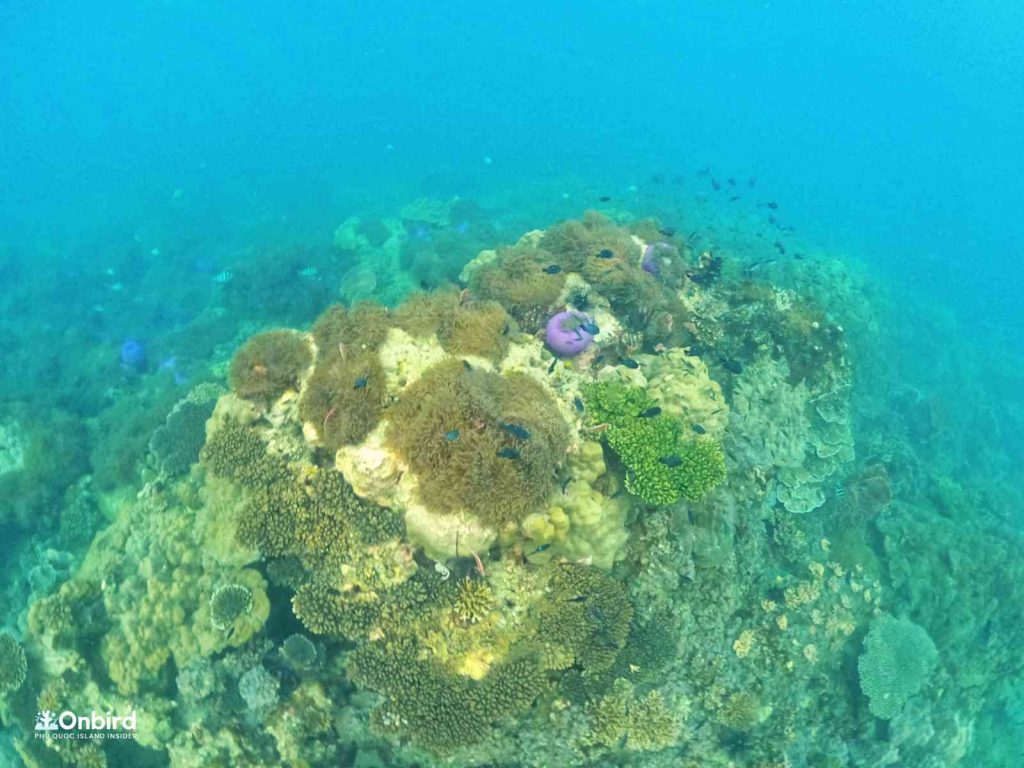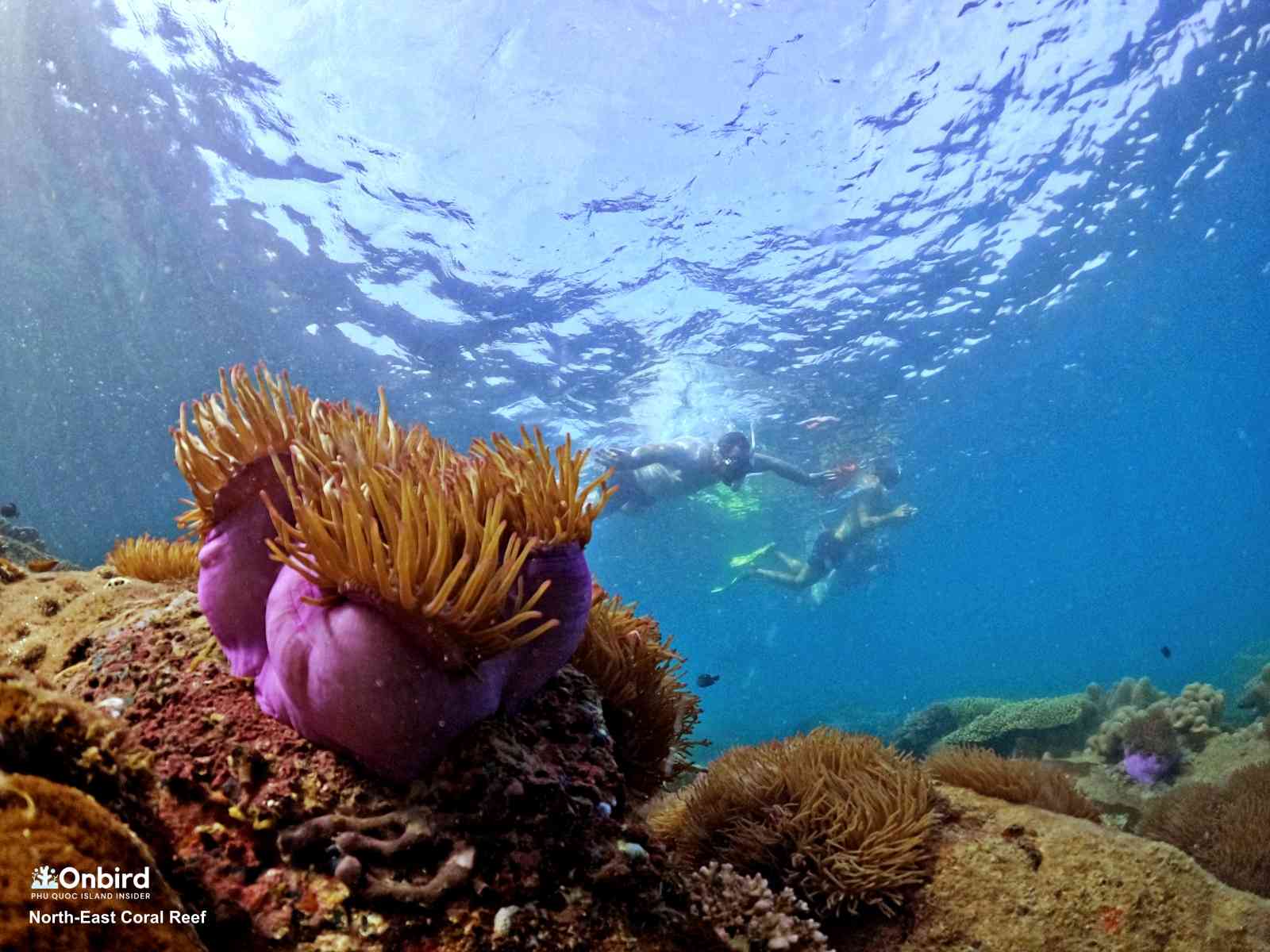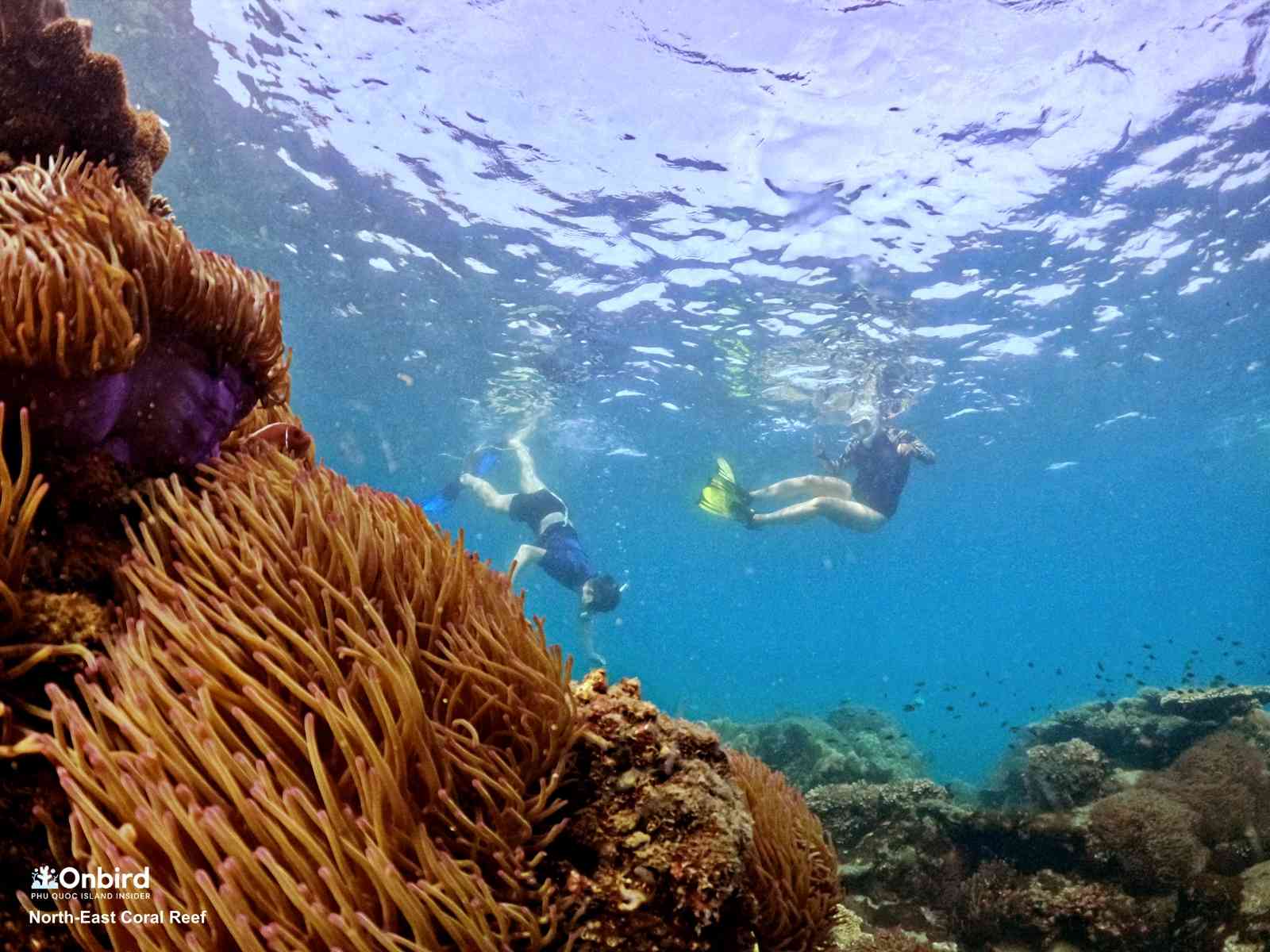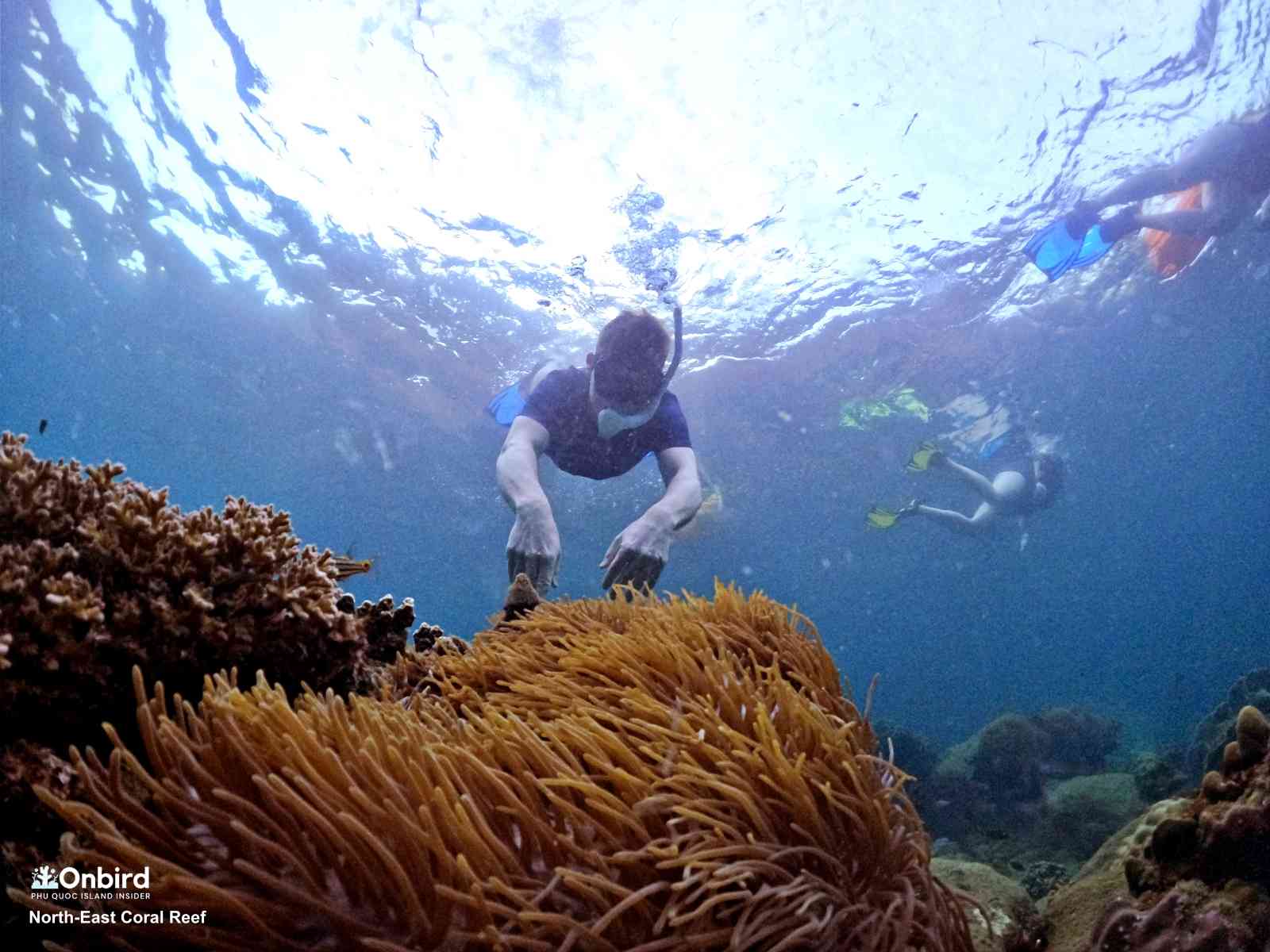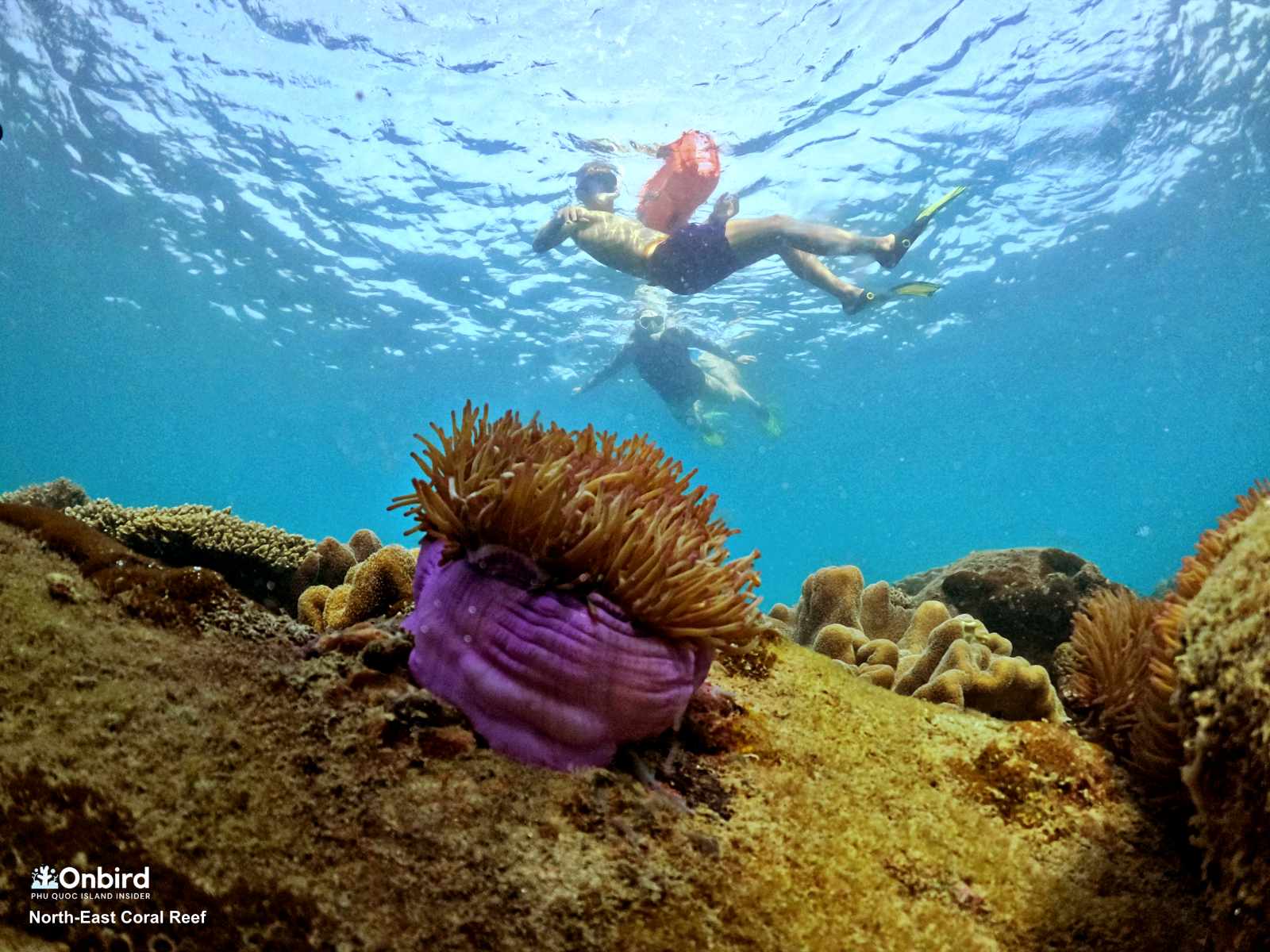The most distinctive sea anemones are recognized by their robust stalks and heads adorned with short, vividly colored tentacles, making them a captivating sight for snorkelers and divers. Anemone colonies are not prevalent in Phu Quoc Island, with their presence concealed within expansive coral reefs in both North and South waters. Nevertheless, specific coral reefs such as the North-east Coral Reef and Half-moon Reef in South Phu Quoc Island, Vietnam, host flourishing anemone gardens. Leveraging the coral data collected by OnBird, detailed insights on the sizable anemone colonies in Phu Quoc Island can be provided.
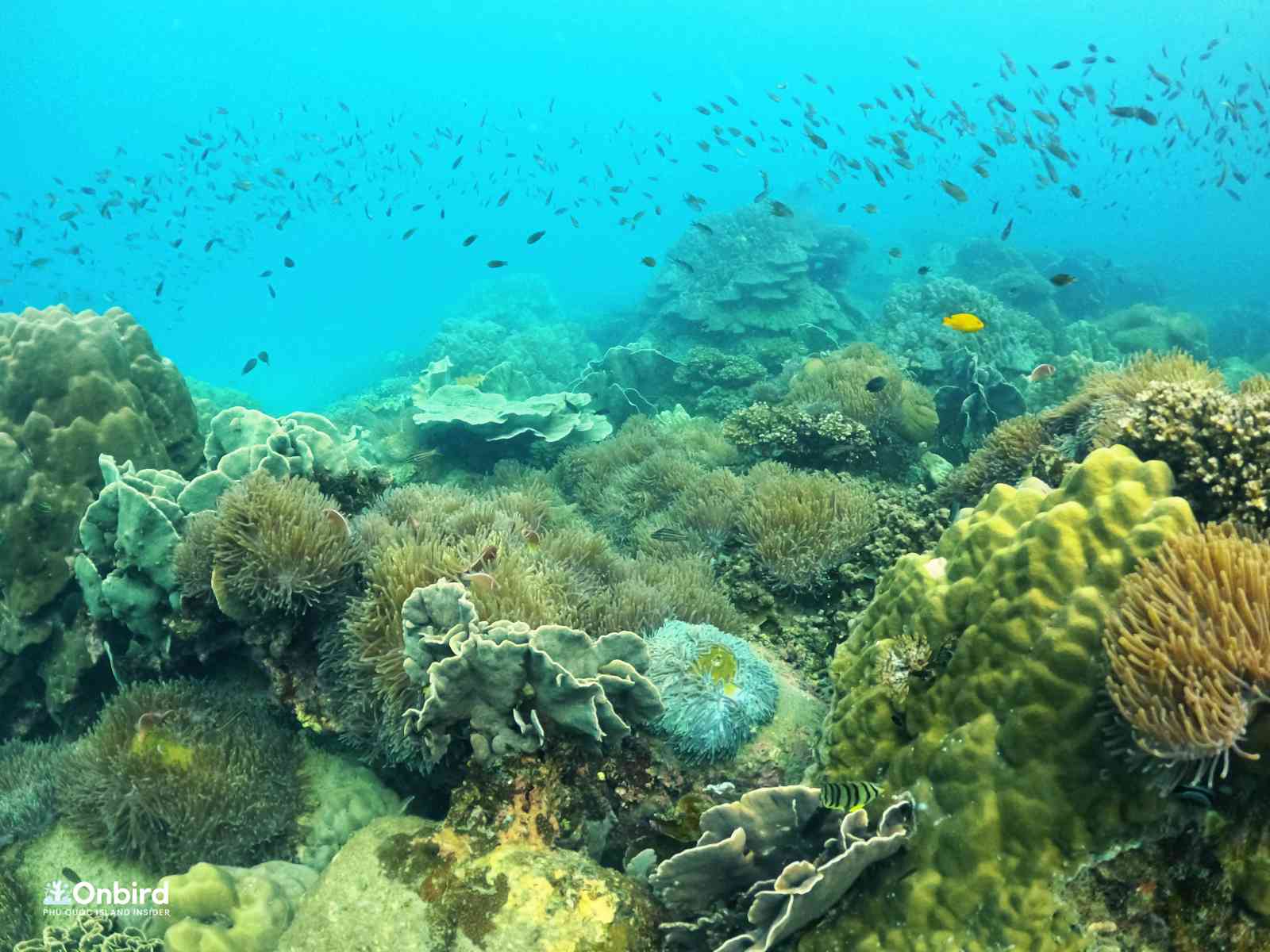
MAIN CONTENTS
1. Where Might One Behold The Ethereal Anemone Gardens In The Phu Quoc Water?
Large anemone colonies can be observed in both North and South Phu Quoc. Nevertheless, South Phu Quoc stands out for hosting exceptionally extensive anemone colonies, often referred to as “anemone gardens” or the “kingdom of anemones.”
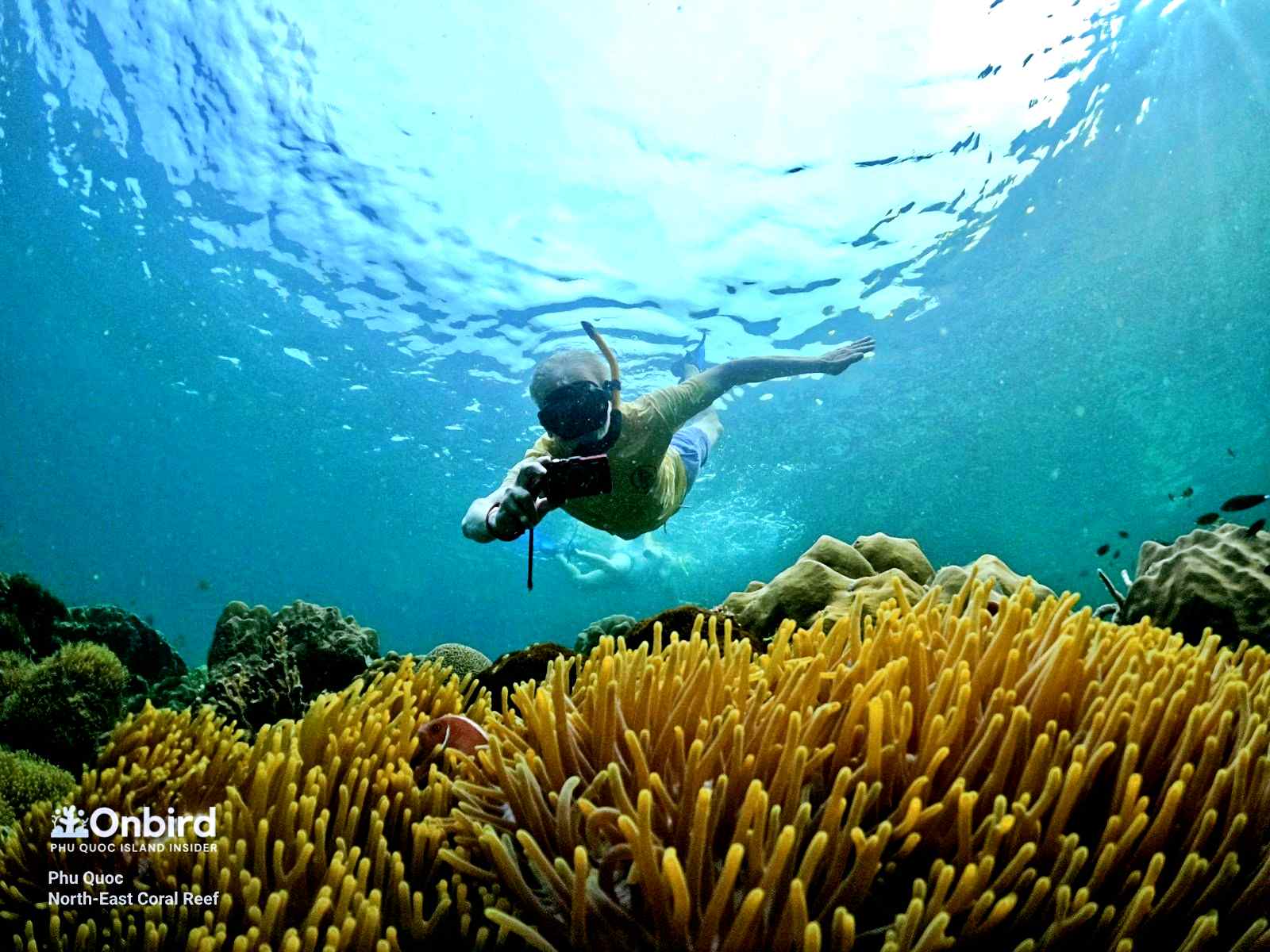
Anemone colonies predominantly thrive in shallow waters akin to hard corals. In Phu Quoc, prime locations for observing anemone colonies typically range from 1m to 5m in depth, notably at sites like the Coral Jungle Reef, Border Reef, Shallow Reef, Coral Steep, Half-moon Reef, U-Turn, North-east Coral Reef, and Coral Garden. While most colonies consist of small clusters with a limited number of individual anemones, specific areas such as the North-east Coral Reef, Half-moon Reef, and Border Reef boast expansive gardens that captivate snorkelers and divers alike.
Some of the expansive anemone gardens are situated at depths ranging from 6 to 8 meters within the North-east Coral Reef. Observing these requires either skin diving expertise or scuba diving. These vast anemone gardens are comprised of a minimum of 15 to 20 individual anemones that adorn the seabed, rocks, and reef inclines of Half-moon Reef within the North-east Coral Reef.
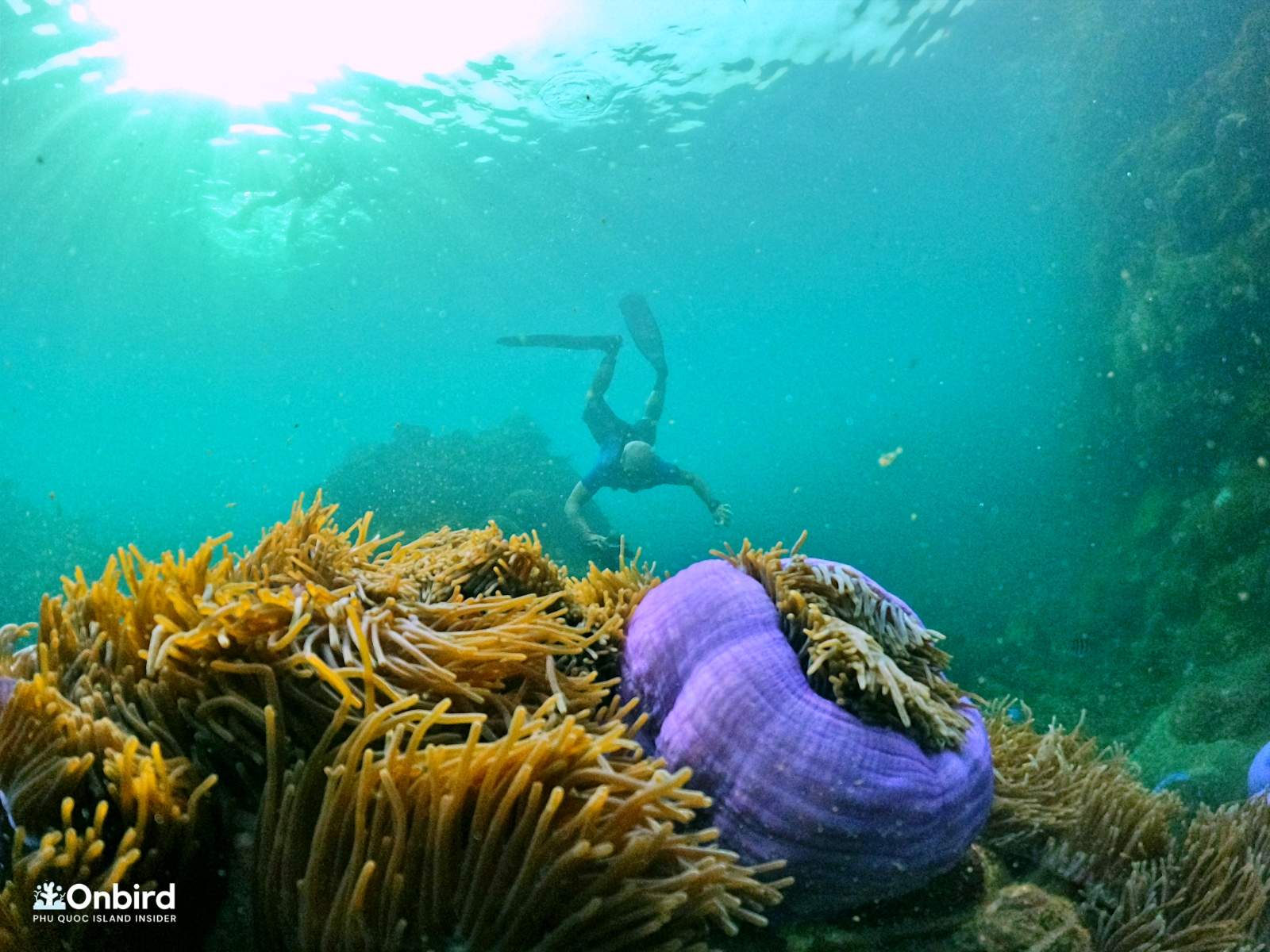
At the Half-moon Reef, anemone gardens are located on big rocks, and walls, they are not easy to see and not as dense as in the North-east Coral Reef. Some other spots like Coral Steep and Shallow Reef, U-Turn in South Phu Quoc we can see small colonies with few anemones or even only one.
Dive into the Kingdom of Anemone Gardens with Hong Kong and Poland couples
2. At Which Depths Are Anemones Most Commonly Found In Phu Quoc Island?
At Phu Quoc’s North-east Coral Reef, anemone colonies thrive on flat reefs at depths ranging from 0.5 to 2 meters. In contrast, the larger anemone gardens predominantly reside on reef slopes at depths of 3 to 6 meters. Moving to the Half-Moon Reef, anemone gardens are situated deeper, between 4 to 7 meters, and are more concealed compared to those at the Northeast Coral Reef. The precise location of anemones at the Crystal Reef, Coral Steep, and Shallow Reef poses an even greater challenge.
One will undoubtedly be captivated by the extensive anemone gardens found in the North-east Coral Reef and Half-moon Reef, often referred to as the anemone kingdom.
3. What Species Of Clownfish Is Most Commonly Found In The Waters Of Phu Quoc?
Nemo is a commonly used reference when discussing anemones and clownfish; however, Nemo specifically represents the false percula clownfish or the ocellaris clownfish, both of which are prevalent varieties. Notably, in Phu Quoc, a different species of clownfish, the Pink Skunk Klownfish adorned with distinctive white stripes on their head, can be observed instead of the traditional Nemo-type clownfish and this is the most commonly found in the waters of Phu Quoc Island.
The Pink Skunk Clownfish is very Peaceful and can even be a little Timid. They are the calmest & least aggressive fish on the reef
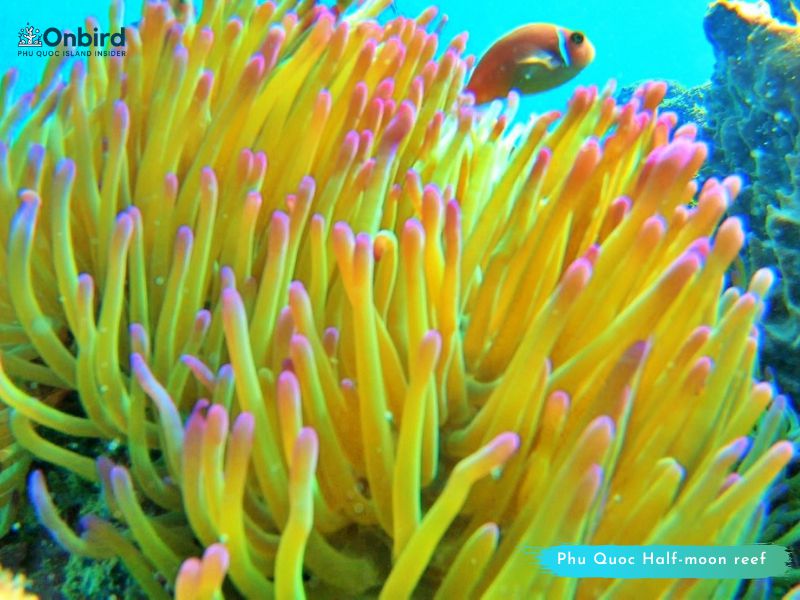
The Pink Skunk Clownfish, alternatively referred to as the Pink Skunk Anemonefish or False Skunk-striped Anemonefish, displays a peach-orange hue as its primary coloration. It features a single white stripe extending from the nose along the back and a distinct white stripe positioned behind the eyes for added contrast. The combination of Dorsal stripe and Head Bar distinguishes it from most other clownfish species

4. Video of an Anemone Garden
The video was recorded by OnBird in 2019 at the Half-moon Reef, South Phu Quoc Island, Vietnam



